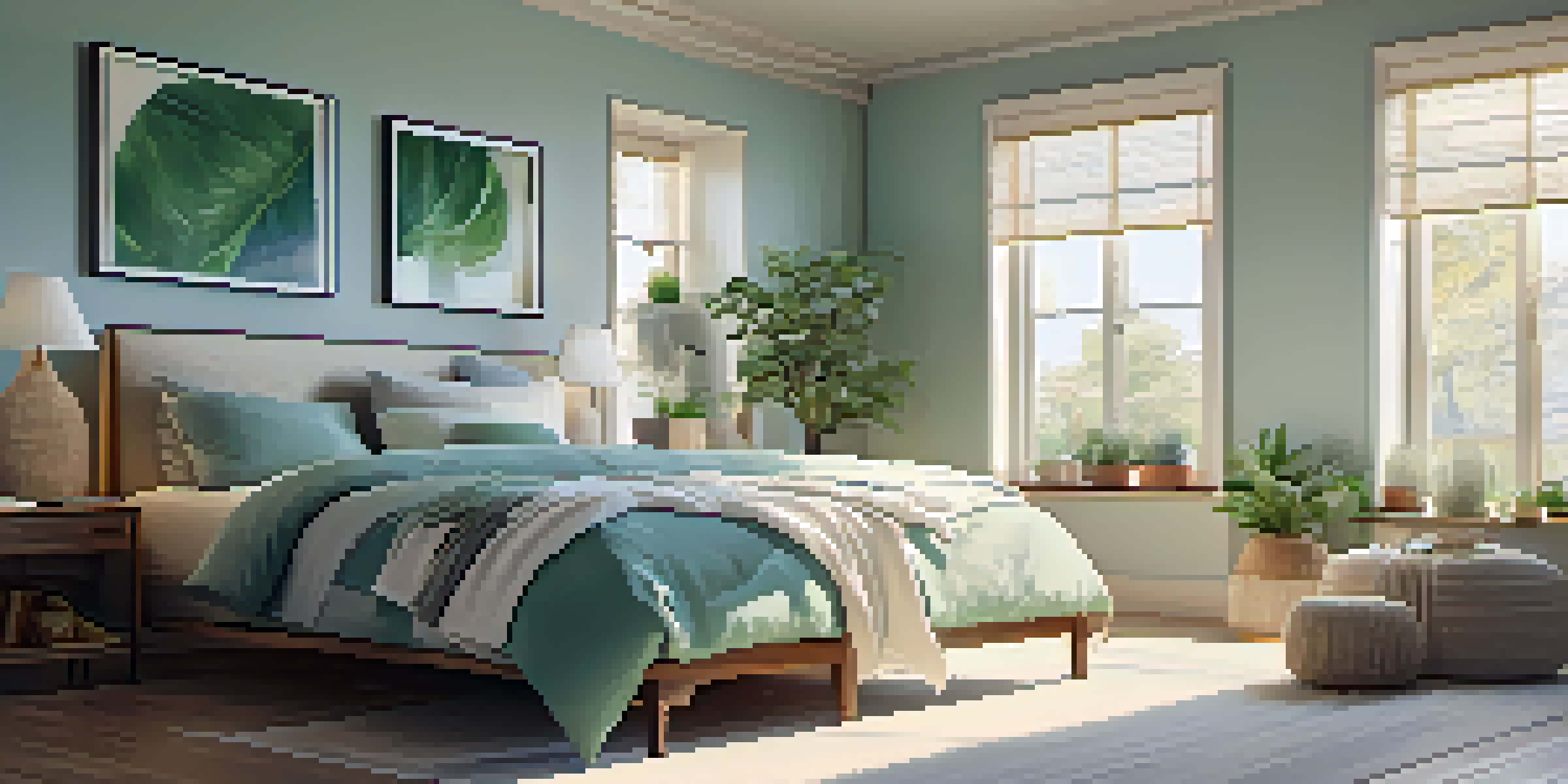Home Design and Mental Health: Creating Calming Spaces

The Connection Between Home Design and Mental Well-Being
Our surroundings play a significant role in shaping our mental health. When we think about home design, it’s not just about aesthetics; it’s about how a space makes us feel. A well-designed home can reduce stress, promote relaxation, and even enhance productivity.
The design of each space is a reflection of our inner selves, influencing our emotions and well-being.
Consider how you feel walking into a cluttered room versus a serene one. The latter often feels inviting and calming, while the former can create anxiety and overwhelm. By understanding this connection, we can start to prioritize mental well-being in our design choices.
Ultimately, our homes should be sanctuaries that support our emotional needs. By blending comfort with functionality, we can create spaces that not only look good but also nurture our mental health.
Color Psychology: Choosing Colors for Calming Spaces
Colors have a profound impact on our mood and emotions. For instance, soft blues and greens are known to evoke feelings of calmness and tranquility. These colors can create a peaceful environment, making them ideal choices for bedrooms or relaxation areas.

On the other hand, vibrant colors like red or orange can energize a space, but they might not be the best for areas where you seek relaxation. By carefully selecting the color palette, you can significantly influence the atmosphere of your home.
Home Design Affects Mental Health
Our home environments significantly influence our mental well-being, making thoughtful design choices essential.
Incorporating these calming colors into your design doesn’t have to be overwhelming. Simple touches like throw pillows, wall art, or a fresh coat of paint can transform a space and enhance your overall sense of well-being.
Natural Light: The Power of Sunlight in Home Design
Natural light is one of the simplest yet most effective ways to enhance your mood. Sunlight boosts serotonin levels, which can make you feel happier and more energized. When designing your space, consider how to maximize natural light through windows, skylights, or open layouts.
Your home should be a collection of what you love, and not what you think you should love.
If you’re in a darker area, consider light-colored furnishings and mirrors to reflect light throughout the room. Even strategically placing a few plants can bring a sense of nature indoors, further enriching the atmosphere.
By prioritizing natural light in your home design, you create a warm and inviting environment that promotes mental clarity and emotional balance.
Incorporating Nature: Biophilic Design for Well-Being
Biophilic design emphasizes our connection to nature, which can significantly enhance our mental health. Bringing the outdoors inside—whether through houseplants, natural materials, or views of nature—helps create a calming atmosphere. Studies show that spending time in natural settings can reduce stress and improve mood.
You don’t need a sprawling garden to embrace biophilia; even a few plants on a windowsill can make a difference. Consider elements like wooden furniture or stone accents to further connect your indoor space with the natural world.
Natural Elements Boost Mood
Incorporating natural light and biophilic design can enhance emotional balance and create a calming atmosphere.
By incorporating nature into your home design, you create a serene environment that nurtures your mental well-being while also adding a touch of beauty.
Decluttering: The Mental Benefits of a Tidy Space
Clutter can be a significant source of stress, making it hard to concentrate and relax. A tidy space promotes a sense of order and tranquility, helping clear your mind. By prioritizing decluttering, you can create a calming environment that supports your mental health.
Start small: tackle one room or area at a time. Consider utilizing smart storage solutions to keep items organized and out of sight. The act of decluttering itself can be cathartic, leading to a sense of accomplishment and relief.
Incorporating a minimalist approach can further enhance the calming effect of your space. By surrounding yourself with only the items that spark joy, you create an environment that feels both peaceful and purposeful.
Creating Functional Spaces: Zones for Mental Clarity
Designing your home with specific zones can enhance functionality and mental clarity. For example, creating distinct areas for work, relaxation, and socializing helps you mentally separate different activities. This separation can lead to increased productivity and reduced stress.
When your space is organized into functional zones, it becomes easier to switch between tasks. Having a cozy nook for reading or a dedicated workspace can help you focus and unwind more effectively.
Personal Touches Create Comfort
Adding personal elements to your home fosters a sense of belonging and can improve your overall mood.
By thoughtfully designing these spaces, you not only improve your home’s efficiency but also support your mental well-being by creating environments tailored to your needs.
Personal Touches: Infusing Your Space with Meaning
Your home should reflect who you are, including your personality and experiences. Incorporating personal touches, whether through artwork, photographs, or mementos, can create a sense of belonging and comfort. These elements can evoke positive memories and emotions, making your space feel truly yours.
When you surround yourself with items that hold meaning, it can boost your mood and mental health. This connection can serve as a reminder of what makes you happy, providing a comforting anchor in your day-to-day life.

By infusing your home with personal touches, you transform it into a sanctuary that nurtures your soul and supports your mental well-being.